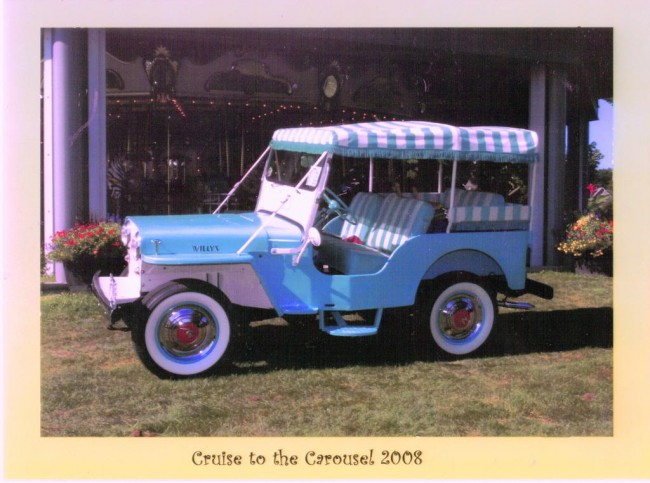 UPDATE: Bruce let me know that there were three different windshields sported by the DJ-3A:
UPDATE: Bruce let me know that there were three different windshields sported by the DJ-3A:
1. The typical 3A type with the vent that opens up;
2. It also came with what is referred to as the 3B WS frame. That green jeep (see below) probably has it’s original WS frame;
3. The 3rd style is the ventilating WS frame that is similar to the 2a frame in
that the glass tilts outward. This 3rd type is very rare and I have only
seen one DJ with the 3rd style
OVERVIEW
I’ve been meaning to write this history of sorts about the DJ-3A ever since I received this information from Bruce last October. Many thanks to Bruce for his tireless effort to understand the DJ-3A and his desire to share this information with the world-at-large.
I would still not consider this post finished, as I’m sure a few of you have some interesting details to add or correct.
THE GOAL:
My goal here is to take Bruce’s information and organize it in a way to make sense of this strange thing called the DJ-3A Dispatcher Gala Surrey Not-quite-a-CJ-3A colorful Jeep. I want to differentiate between these three models — DJ-3A/DJ-3A dispatcher, DJ-3A Gala, and the DJ-3A Surrey — so that I can better evaluate these vehicles when I run across them for sale.
So, let’s begin:
One of the more confusing series of jeeps I’ve encountered are the DJ-3A, the DJ-3A Gala and the DJ-3A Surrey. However, thanks to both information from Bruce (who also supplied Derek Redmond with much of the DJ-3A Gala Surrey information and pics on the CJ-3B Page) and an article in the December 2009 issue of Vintage Truck Magazine, I *think* I have a much better feel for this topic.
Importantly, and for clarification, based on all the research I have reviewed, there appears to be no such thing as a DJ-3A Gala Surrey (and I’m as responsible as anyone for describing them that way). The literature I have received from Bruce refers to either a DJ-3A Gala or a DJ-3A Surrey. The Gala’s were promoted as Gala’s at the international resorts and Hawaii (which became a state in 1959, which might explain why this was being handled like an international sale).
THE DJ-3A & DJ-3A DISPATCHER:
The DJ-3A was introduced in 1955. It used the body style of the older CJ-3A, along with the L-134 engine. Unlike the CJ-3A, it came with either a column shift or top loader three-speed T-96 manual transmission. It was offered with many different body options including a soft top, hard top, or even a full van body. Some of these body options made changes to the body necessary, including some that had no tailgates so the spare tire could mount in the rear.
Others, like the DJ-3A Dispatchers, had differently shaped passenger and driver sides to allow easy entry & exit of the vehicle (I assume those were the reasons). With all these different body options, it is no wonder many of us, and yours truly as well, were confused about what constitutes a DJ-3A.
Thus far, everything I’ve learned suggests that there were no 4wd DJ-3A’s produced. So, if you encounter a 4wd DJ-3A, it’s been modified.
Probably, the most distinctive, unique, and consistent body attribute of a DJ-3A is the large speedometer, similar to the CJ-5 and the post-1955 CJ-3B speedometers. It was the only ‘low hood’ flat fender produced with the large speedometer.
EXAMPLES:
Below is a Convertible DJ-3A. You can see the lack of 4wd in the front. Click on the picture to see more pictures. Though I thought the below windshield was from a CJ-3B, Bruce provided a correction to that statement. He says some DJ-3As came with a 3B SW Frame, and he believes that’s what we are looking at in this pic.
Here’s an example from Chris of a DJ-3A without a tailgate.
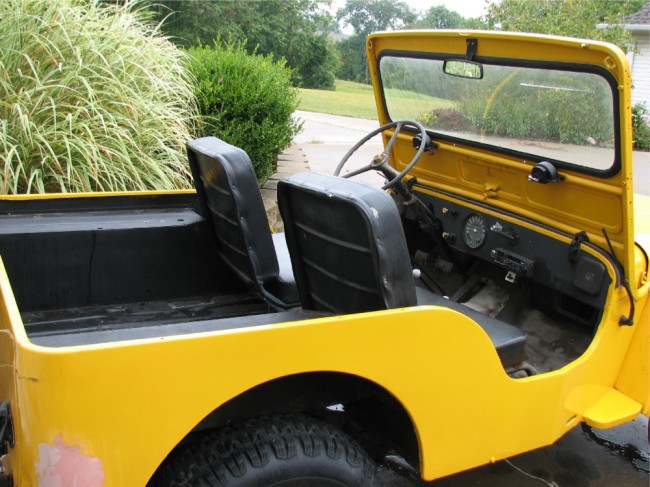
Here’s a DJ-3A Dispatcher example (note cutout sides) with a tail gate:
And here’s another nice dispatcher with a top:
THE DJ-3A GALA:
In early 1959, the DJ-3A Gala was introduced and marketed to vacation locations in an attempt to offer rentable transportation solutions for vacationers visiting resorts. According to the article below, the idea was the brain child of the Las Brisas Resort in Acapulco, Mexico, which painted a few jeeps pink and offered them to consumers. Louis Yocich, a Willys dealer, spotted them and brought the idea back to the factory. To this day, the Las Brisas resort and hotel still refers to itself as a ‘Pink and White Paradise” (see quality control comment).
MUCH MUCH More information. This post was simply too big to put on the front page:
And just to confuse things, here is are 3 press releases from Willys Motors. The first one announces the ‘Surrey’, but is really discussing the Gala. In contrast to that, the other two labels the Jeep a Gala:
Here are Color Schemes:

Here’s a Gala postcard:
Here’s what Bruce describes as 3 1959 Press Photos for Galas:



Finally, here is a 10 page brochure, that I assume is in order, aimed at hotels to stimulate demand for Rental Galas.
One additional note. While I haven’t found a confirmation about this, one poster of a DJ-3A Surrey on youtube says that Willys Motors found themselves with a surplus of bodies and chassis from a cancelled Post Office contract, leaving Willys with a supply of parts they wanted to use for something. This would provide additional motivation to reach out to Las Brisas and other resorts.
Geographic Areas using Galas:
Galas were purchased by businesses in Mexico, Hawaii, Cuba, Virgin Islands, Puerto Rico, and, just to throw a wrench into my definition of a Gala, apparently Chicago. But hey, Chicago is another world, right? Anyone know of other areas?
Here’s lots of literature and images of the Gala rentals:
Las Brisas, Acapulco, Mexico:

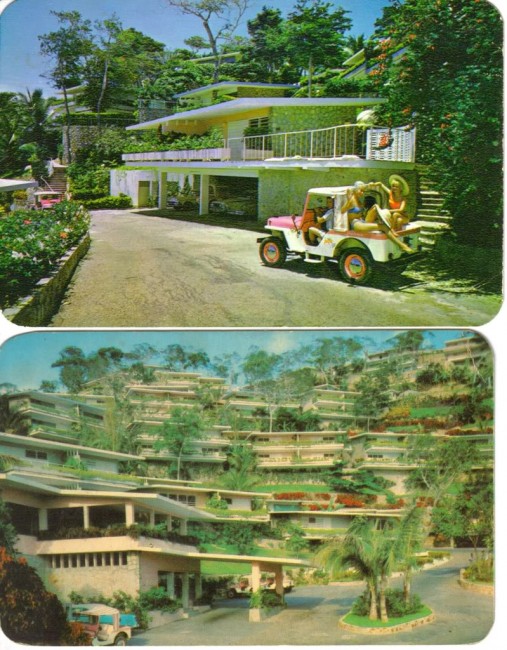
View some more, rare, Las Brisas Surreys
This was a jeep image from a menu:

And an image from a matchbook cover:

From the island of St Thomas in the Virgin Islands:
Here’s the front and back of a matchbook from St. Thomas
And a variety of items from Hawaii:
THE DJ-3A SURREY:
With the success of the Gala, starting in late 1959, Kaiser Willys decided to expand the theme of the Gala, choosing to promoting the DJ-3A Gala domestically as the DJ-3A Surrey in an attempt to capture the historical theme of the old Surrey buggys used for transportation in the horse and buggy days. The biggest identifier was the change from a half cab to a full top with a trim reminiscent to the old horse-n-buggy surrey tops, but in a color scheme similar to the Galas. These would be produced from late 1959-1964 and ‘exported’ by Willys Motors Export Company as Galas. In addition, a Continental Kit could be purchased to dress up any jeep and turn it into a Surrey.
First, here are 2 different pages of a brochure:
Here’s Miss Autoline on a Surrey:

And here’s a 1964 Surrey:
Here’s a 1963 Surrey from the Nutty Professor:

The Internet Movie Car Database has several shots of Surrey’s from movies.
Here are the results from a search of Surreys that have been for sale over the last two years that I posted on eWillys.
And, finally, two videos of Surreys

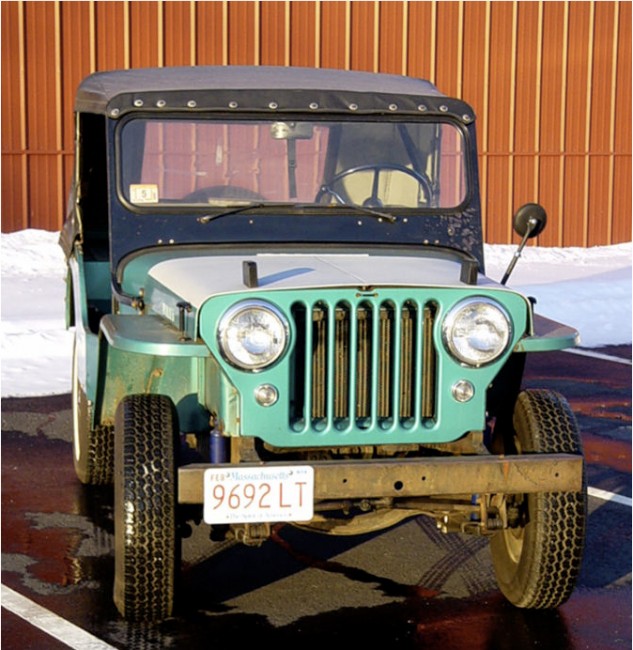
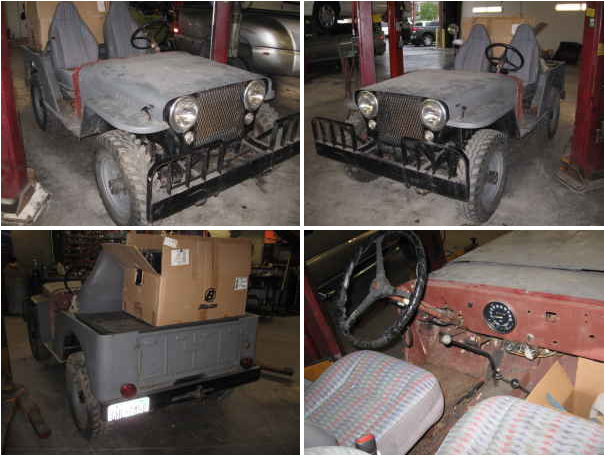
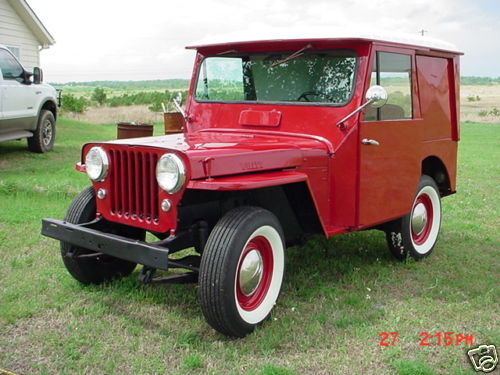
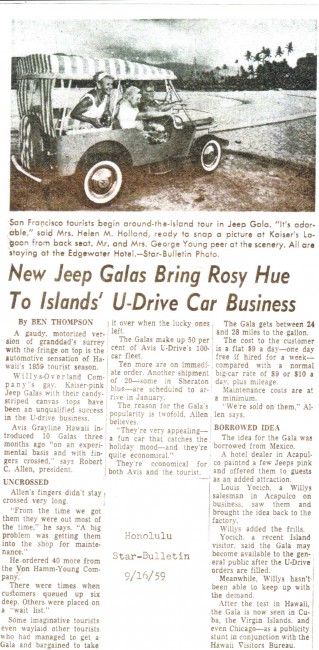

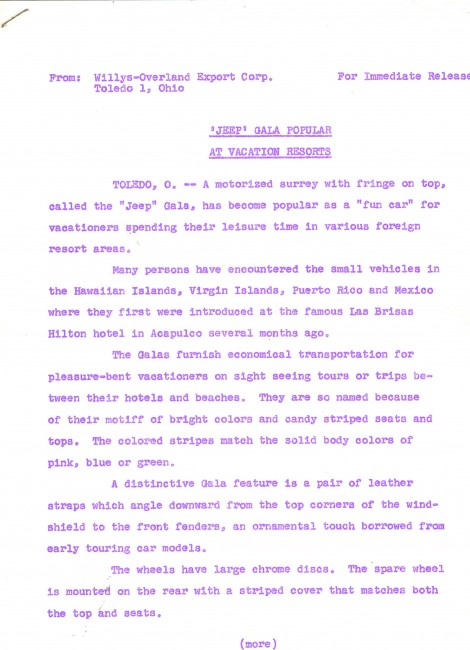










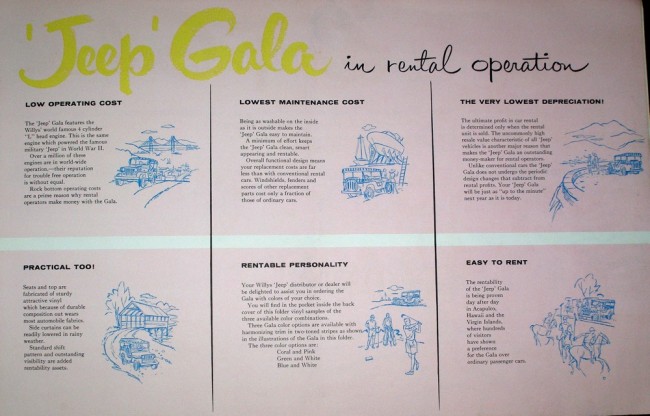

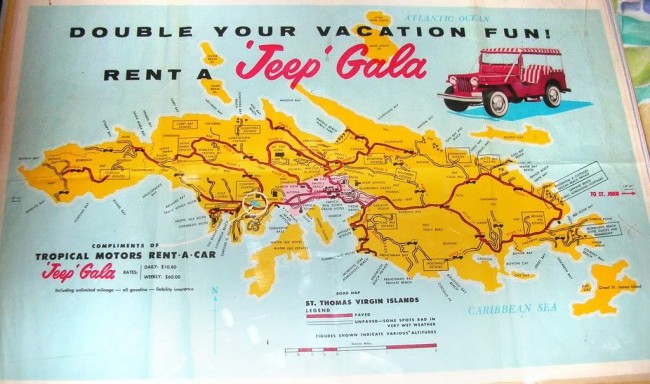

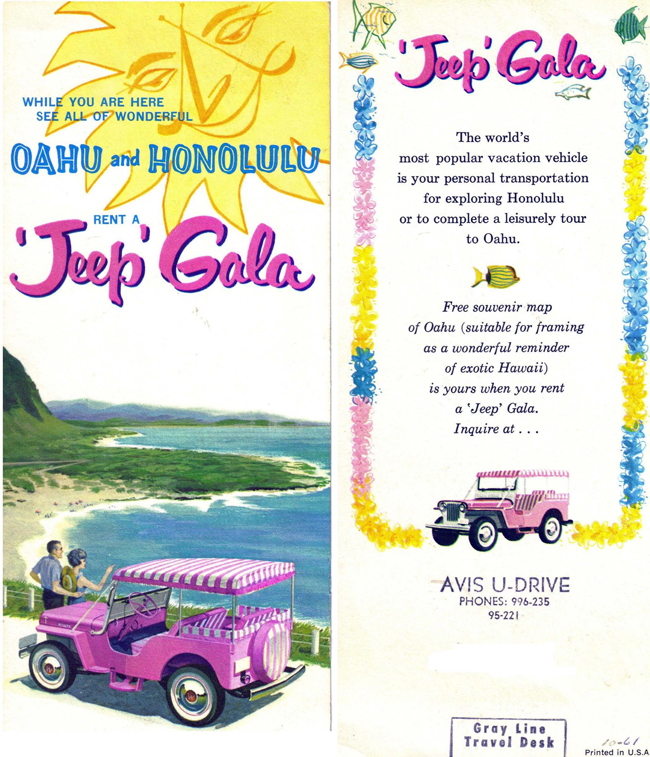





Hi
Great site. I have a 1960 DJ3A Surrey that was advertised for sale in Lynnfield, MA in Dec. 2009. It is a great little Jeep and we are having a lot of fun with it.
Colin in Phoenix
Hi Colin,
Thanks for the feedback. I’ll update that post. It’s great to hear you are enjoying your jeep. If you have any questions, feel free to shoot me a note (d@ewillys.com).
– Dave
Fascinating post. Maybe you can provide some further insight to what I have.
Which is two surrey canvas tops, including window and door panels. One is blue and one is pink.
They were with a 1953 CJ-3B. I do I determine what model willys these will fit. Could I have the continental package as was mentioned above?
Thanks,
John
John-
What you have are tops that fit the DJ3A Surreys produced between 1959 and late 1964. They will
Probably fit the CJ3A Jeeps with the original vented windshield frame. I believe I sent you information a week or so ago and I also contacted a friend who was going to contact you about the tops. Did you make contact with him? Were you able to get them cleaned up?
YES! You did!
I’ll email you.